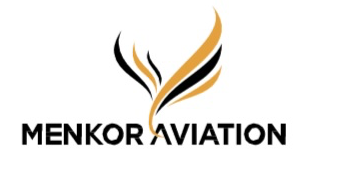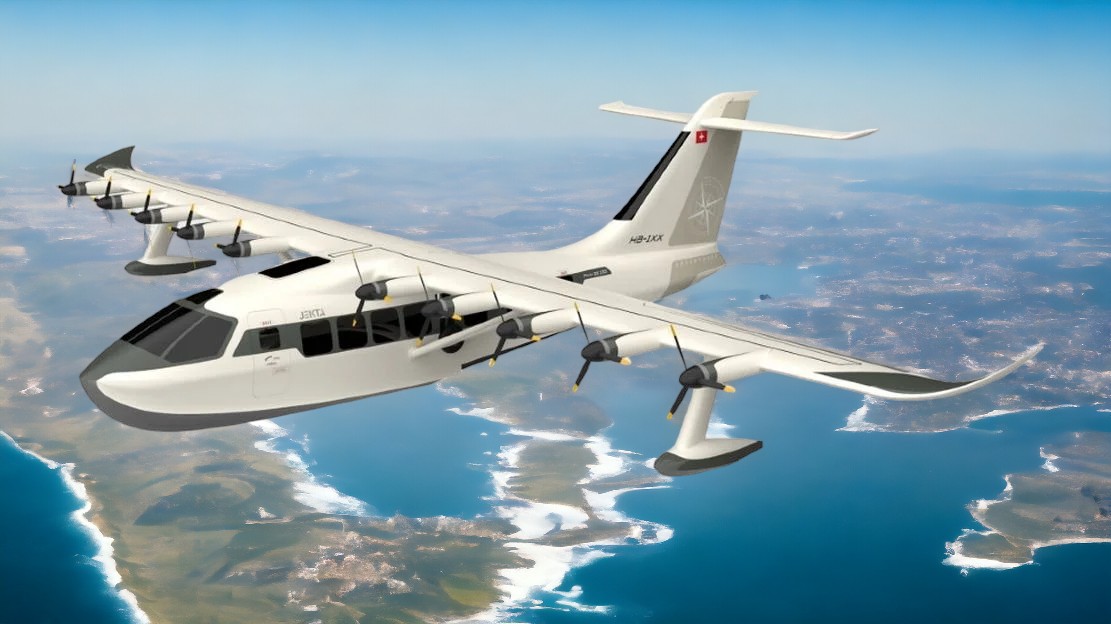
Introduction
A. Subject presentation
The PHA-ZE 100 is at the cutting edge of aviation innovation. This revolutionary electric seaplane represents a major advance in terms of technology and sustainability. Designed to offer an environmentally-friendly alternative to traditional aircraft, the PHA-ZE 100 combines advanced electric propulsion with the versatile capabilities of a seaplane, meeting modern mobility needs while minimizing environmental impact. This new aircraft promises to transform the aviation sector by offering a transportation solution that is both efficient and environmentally friendly.
B. The importance of innovation in aeronautics
Innovation is essential to the continued evolution of the aviation industry, and sustainable technologies play a crucial role in this transformation. Faced with today’s environmental challenges, aviation must adopt innovative solutions to reduce carbon emissions and promote a greener future. Electric aircraft, such as the PHA-ZE 100, are a perfect example of this transition to greener transportation methods. By integrating clean technologies, these aircraft reduce aviation’s carbon footprint and pave the way for more responsible and sustainable travel.
C. Objective of the article
This article aims to detail the unique features and benefits of the PHA-ZE 100, exploring the technical aspects of this electric seaplane, its performance, and the ecological innovations it brings. In addition, we will discuss the various applications and uses of this aircraft, highlighting its potential to transform commercial, scientific and emergency aviation. Ultimately, this article aims to demonstrate how the PHA-ZE 100 can contribute to a more sustainable and efficient aeronautical future.
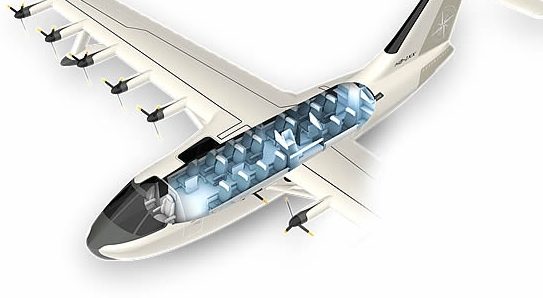
PHA-ZE 100: A jewel of technology
A. PHA-ZE 100 technical specifications
The PHA-ZE 100 stands out for its advanced technical features, making it a pioneer in the field of electric seaplanes. Its innovative design incorporates lightweight composite materials, enabling greater energy efficiency and a significant reduction in weight. The PHA-ZE 100’s electric drive is based on latest-generation lithium-ion batteries, offering high storage capacity and rapid recharging. Technical specifications include a wingspan of 15 meters, a length of 12 meters, and a carrying capacity of 10 passengers, with a flight range of 300 kilometers.
B. Performance and autonomy
The PHA-ZE 100 stands out for its impressive flight capabilities. With a cruising speed of 155 mph, it effectively rivals traditional seaplanes, while offering the added benefits of electric power. Intelligent energy management optimizes battery life, allowing longer flights with less recharging time. The PHA-ZE 100 offers a competitive range compared to conventional internal combustion engine seaplanes, making regional routes and passenger and cargo operations more economically and environmentally viable.
C. Ecological innovations
The PHA-ZE 100 incorporates a number of environmentally-friendly technologies that reduce its environmental footprint. These include zero-emission CO2 electric propulsion systems and the use of recyclable materials in its construction. In addition, the aircraft is equipped with integrated solar panels that help power on-board electrical systems, increasing overall energy efficiency. The PHA-ZE 100’s reduced environmental impact is a major asset for sustainability-minded operators, making this model particularly attractive for sensitive regions and fragile ecosystems.
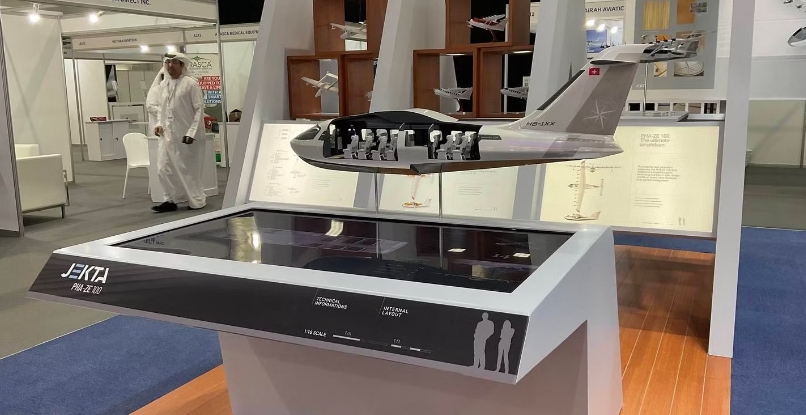
Advantages of electric seaplanes
A. Reducing CO2 emissions
One of the main advantages of electric seaplanes, like the PHA-ZE 100, is the significant reduction in CO2 emissions. Thanks to the electric motor, these aircraft emit no greenhouse gases during operation, thereby helping to combat climate change. Compared with traditional combustion-powered seaplanes, which produce substantial quantities of CO2, electric seaplanes offer a much more environmentally-friendly alternative. This reduction in emissions is particularly beneficial in sensitive regions and protected areas where air quality is a major concern.
B. Reducing operating costs
Electric seaplanes offer significant economic advantages, particularly in terms of reduced operating costs. One of the main costs of conventional aircraft is fuel, which can be volatile and expensive. By contrast, electric seaplanes use electricity, which is often cheaper and more stable in terms of price. What’s more, electric motors require less maintenance than internal combustion engines, reducing maintenance and repair costs. These savings can make operating of electric seaplanes more profitable in the long term for airlines and transport operators.
C. Less noise pollution
Another major advantage of electric seaplanes is their low noise pollution. Electric motors operate much more quietly than combustion engines, reducing the noise produced during take-off, flight and landing. This feature is particularly beneficial for operations in urban areas and sensitive natural environments where noise pollution can be disruptive. By reducing noise, electric seaplanes minimize the impact on local wildlife and improve the quality of life for residents near take-off and landing zones.

PHA-ZE 100 applications and uses
A. Commercial use
The PHA-ZE 100 is ideal for a variety of commercial applications. Airlines can integrate this electric seaplane into their fleets for passenger transport on short routes, offering a more ecological and economical alternative to traditional aircraft. The tourism sector can also benefit from using the PHA-ZE 100 for panoramic flights and ecotourism excursions, enabling tourists to discover natural sites while minimizing their carbon footprint.
B. Scientific and research use
Scientific and research applications are another domain where the PHA-ZE 100 excels. Thanks to its low environmental impact and ability to fly silently, it is perfect for environmental monitoring missions, such as tracking animal populations, observing fragile ecosystems, and collecting climate data. Researchers can use this seaplane to access hard-to-reach areas without disturbing local wildlife, enabling a more accurate and ethical study of natural environments.
C. Emergency and rescue applications
The PHA-ZE 100 also offers significant advantages for emergency and rescue applications. Its ability to take off and land on water makes it ideal for rescue operations in flooded or isolated areas. It can also be used for emergency medical transport, bringing essential medical care and supplies to remote or disaster-stricken areas. What’s more, its electric drive reduces the risk of pollution, which is crucial for intervention in a sensitive environments.
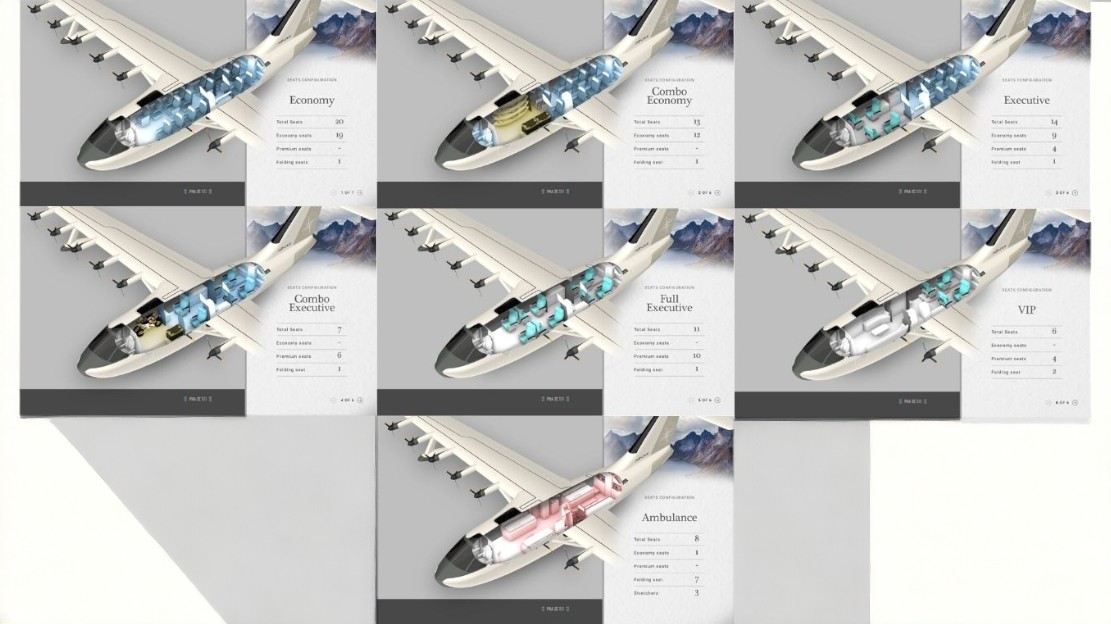
Challenges and opportunities
A. Technical and regulatory challenges
Bringing electric seaplanes like the PHA-ZE 100 to market presents a number of technical and regulatory challenges. From a technical point of view, optimizing batteries to ensure sufficient autonomy while keeping weight down remains a major hurdle. In addition, the development of suitable recharging infrastructures in take-off and landing zones is crucial to operational success. On the regulatory side, the approval and certification of new electric propulsion systems by civil aviation authorities requires rigorous procedures and extensive testing, which can slow down the commercial launch of these aircraft.
B. Perspectives and development
Despite these challenges, the outlook for electric seaplanes like the PHA-ZE 100 is promising. Technological advances in batteries and lightweight materials point to continued improvements in range and efficiency. Future innovations could include more sophisticated energy management systems, high energy density batteries and ultra-fast recharging technologies. In addition, the development of new markets and applications for electric seaplanes, such as cargo transport and air taxi services, opens up numerous opportunities for growth and expansion.
C. The role of public policy
Public policy support is essential to encourage the adoption of electric seaplanes. Favorable regulations, such as tax incentives for operators and manufacturers, as well as subsidies for research and development, can accelerate innovation and commercialization of these aircraft. Governments also play a key role in providing the necessary infrastructure, including charging stations and suitable airport facilities. In addition, strict environmental policies and CO2 emission reduction targets can encourage the industry to invest more in sustainable air transport solutions, thereby boosting the development of electric seaplanes.
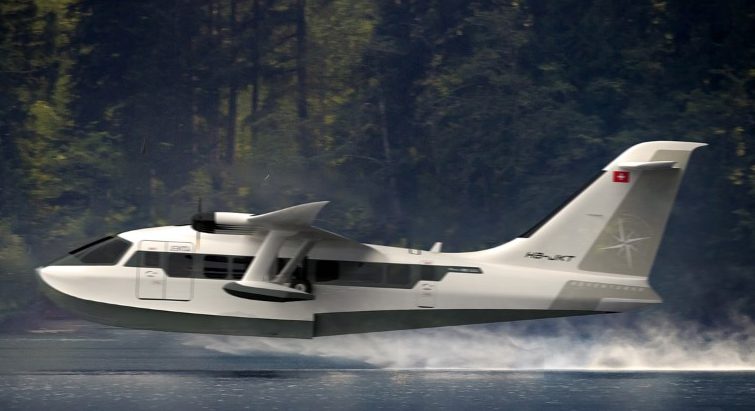
Conclusion
A. Summary of key points
The PHA-ZE 100, a revolutionary electric seaplane, stands out for its advanced technical features, impressive performance and ecological innovations. Featuring an electric motor, lightweight composite materials and environmentally-friendly technologies, the PHA-ZE 100 offers a sustainable alternative to traditional seaplanes. With its competitive range and significant reduction in CO2 emissions, this aircraft represents a significant step forward for sustainable aviation.
B. The importance of innovation for a sustainable future
Technological innovation is essential for a sustainable future, and the PHA-ZE 100 is a perfect example. By reducing aviation’s carbon footprint and integrating environmentally-friendly technologies, this electric seaplane is contributing to the transition to greener aviation. Electric seaplanes like the PHA-ZE 100 play a crucial role in reducing air and noise pollution, improving quality of life and protecting fragile ecosystems.
We invite you to follow the future developments of the PHA-ZE 100 and consider more sustainable transportation choices. Explore the possibilities offered by this innovative electric seaplane and commit yourself to more environmentally-friendly aviation. The PHA-ZE 100 represents the future of environmentally friendly aviation, and your interest and support are essential in promoting sustainable and responsible transportation solutions.
